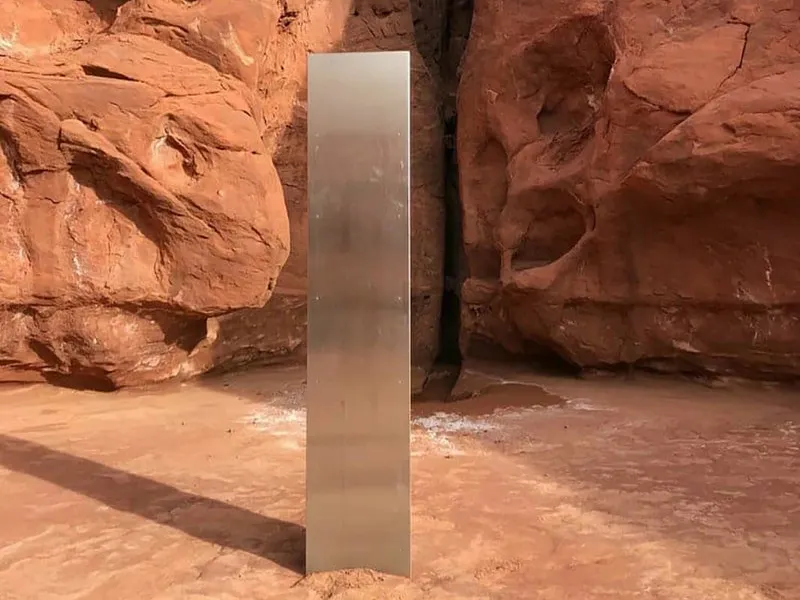
A mysterious metal ‘obelisk’ discovered buried in the remote western desert of the United States has ignited the imagination of UFO enthusiasts, conspiracy theorists, and Stanley Kubrick fans worldwide.

The shiny triangular pillar, protruding approximately 12 feet from the red rocks of southern Utah, was spotted last Wednesday by puzzled local officials counting bighorn sheep from the air.
Upon landing to investigate, members of the Utah Department of Public Safety crew found ‘a metal monolith installed in the ground,’ but ‘no obvious indication of who might have placed the monolith there.’
‘Installing structures or art without authorization on public lands managed by the federal government, no matter what planet you’re from, is illegal,’ the agency warned in an ironic press release on Monday.

The news of the discovery quickly went viral online, and many noticed the object’s resemblance to strange alien monoliths that trigger significant advances in human progress in Kubrick’s classic sci-fi film “2001: A Space Odyssey.”
Others commented on its discovery during a turbulent year that has seen the world engulfed by the Covid-19 pandemic, speculating optimistically that it could serve a completely different purpose.
“This is the ‘reset’ button for 2020. Can someone press it quickly?” joked an Instagram user.
“Up close it reads: ‘Covid vaccine inside,'” wrote another.
Since officials refuse to disclose the object’s location for fear of hordes of curious onlookers flocking to the remote wilderness, an online race has also begun to geolocate the “obelisk” using the surrounding rock formations.
Bret Hutchings, the pilot who flew over the obelisk, speculated that the obelisk had been planted by “some new-wave artist.”
Some observers noted the object’s similarity to the avant-garde work of John McCracken, an American artist who lived for a time near New Mexico and died in 2011.
On Tuesday, a spokesperson for his representative, David Zwirner, said it was not one of McCracken’s works, but possibly that of a fellow artist paying homage to him.
However, later that same day, Zwirner issued another statement suggesting that the piece was indeed by McCracken, meaning it had remained undiscovered in the desert for nearly a decade.
“The gallery is divided on this,” Zwirner said. “I think it’s definitely by John.”
He added, “Who would have known that 2020 had another surprise for us. Just when we thought we had seen it all. Let’s see.”
Either way, Hutchings admitted that it was “the strangest thing I’ve come across in all my years of flying.”
“We were joking about if one of us suddenly disappears, then the rest of us will run,” he told local news channel KSLTV.
Source: ndtv.com




